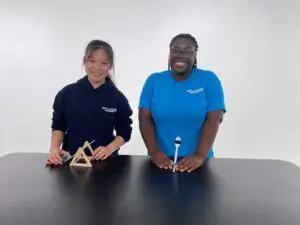Slinky Science
Watching a Slinky move down the stairs or vibrate while being stretched are ideal opportunities for teaching key science concepts. This activity goes from Newton’s laws, to potential and kinetic energy, and finally into sound waves.

Materials
Instructions
Guiding Questions
STEM Connections
Enjoy this activity?
Join our community and receive activities, early access to programs, and other special news, and/or leave feedback on this activity below!
Submitting...
DiscoverE helps create activities like this around Forces, Motion & Energy for children in Middle School and High School to help prepare them for STEM careers in fields like Mechanical.







Thank you! Your submission is processing.